One of the observed and reported phenomena in heterogeneous interfaces of perovskite oxides is the presence of a two dimensional electron gas. In this study, the imperfect interface that is formed between pulsed laser deposited (PLD) LaLuO3 (LLO) films of 30nm and 250 nm on SrTiO3 (STO) were studied.
From cross-section transmission electron microscopy (TEM, FEI Titan 80-300 FEG-S with CS correction) imaging of the LLO/STO system for the 240 nm thick LLO layer (Fig. 1) it can be observed that the LLO film grows with a columnar structure. When looking at the interface of a single column of LLO and the STO substrate, it can be seen that both the substrate and film are crystalline and that they form an abrupt interface with no interfacial layer.
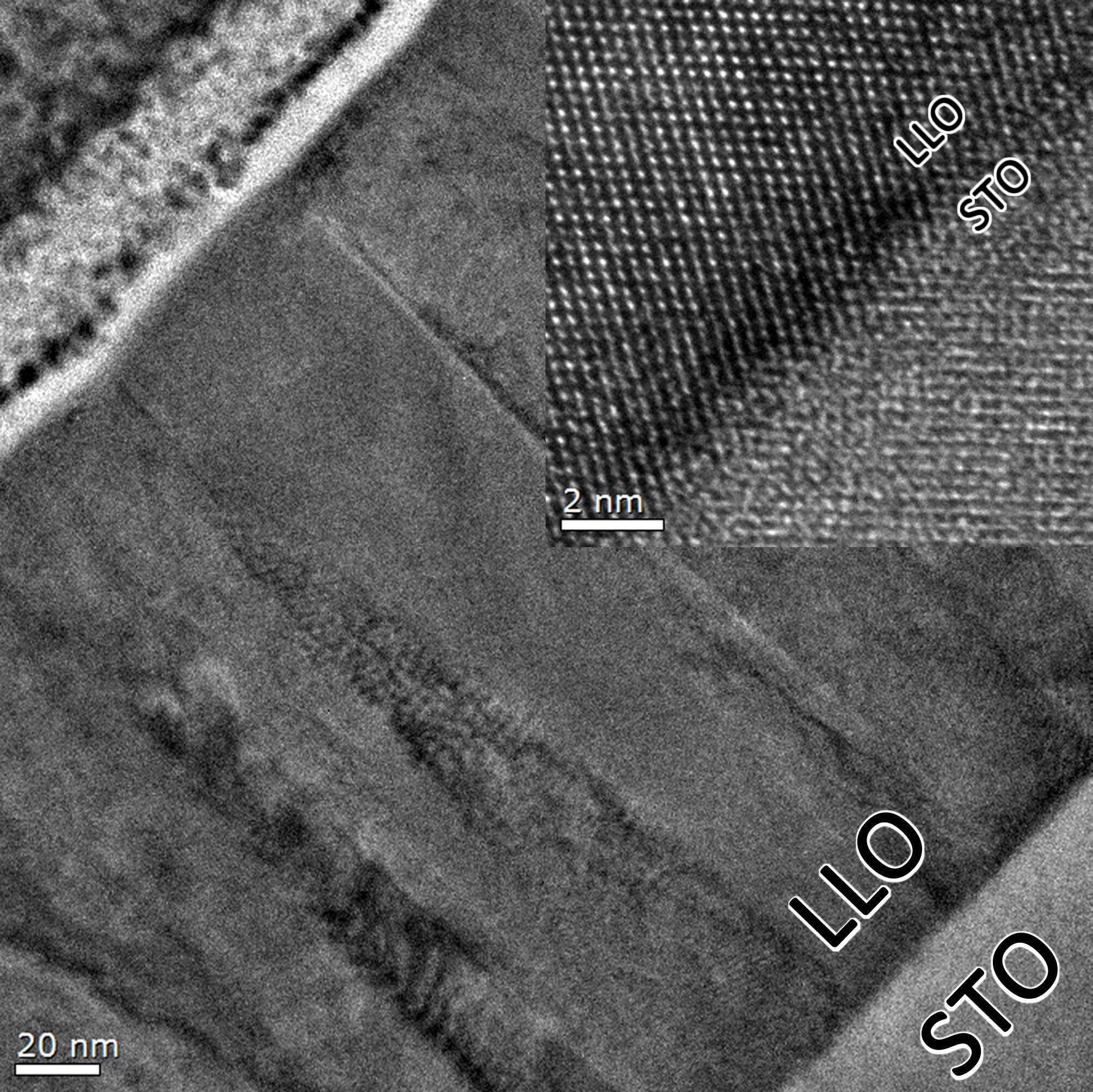
Pole figure textures using x ray diffraction (XRD, Rigaku Smart Lab) allowed for an extensive analysis of the structure and orientation with better statistics. The samples were measured at to include the {240} and {042} diffractions of LLO while also including the {210} diffractions of STO (fig.2). The orientation relations are {100}STO||{110}LLO ; STO||[001]LLO and {100}STO||{001}LLO ; STO||[130]LLO for the part of the film adjacent to the interface and the top of a thick film, respectively.
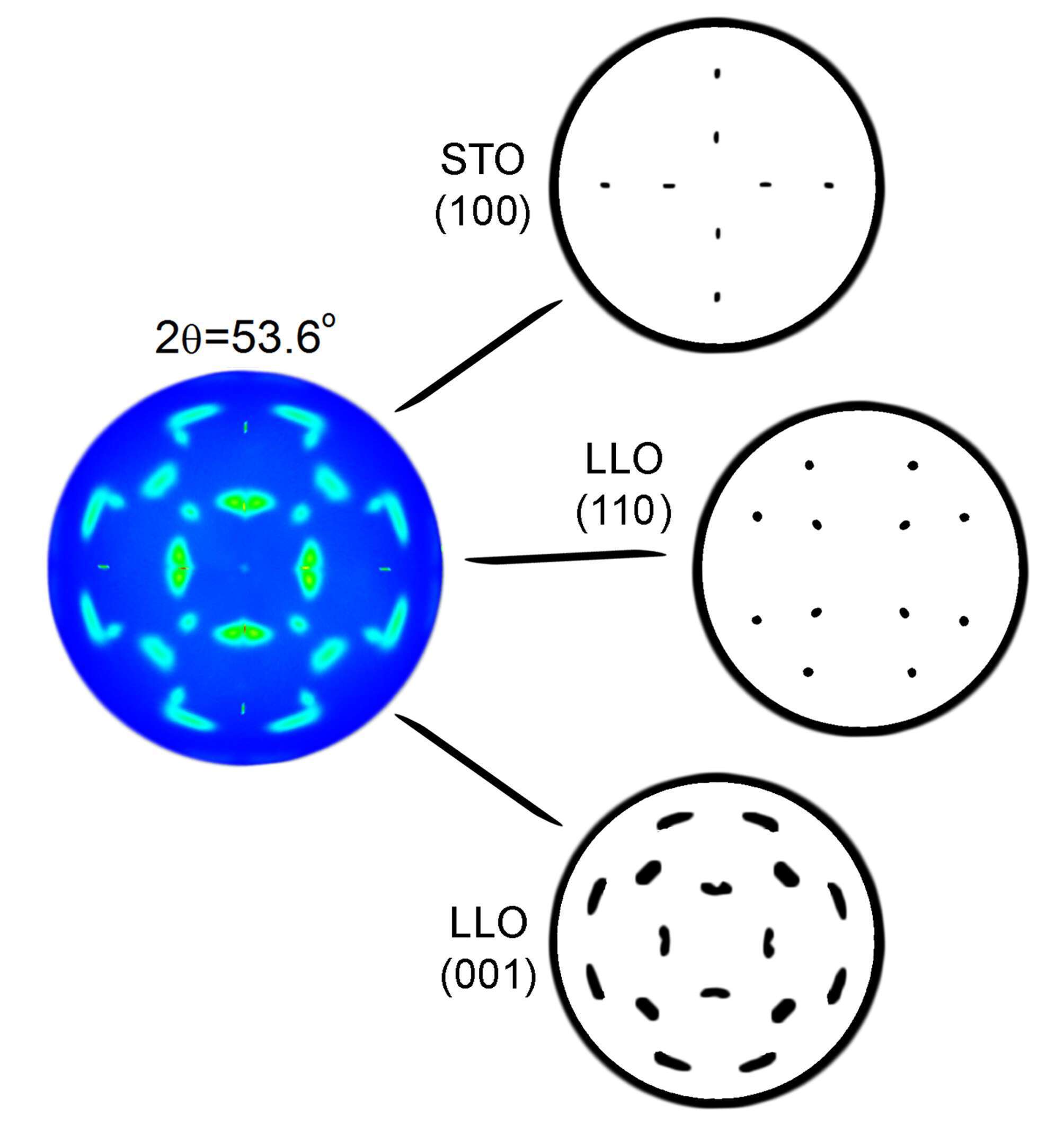
It can be observed in images obtained by scanning tunneling microscopy (STM, Omicron AFM/STM system) that the intensity of the Z axis trace of either side of the interface is different (fig 3). On the left hand side of the interface the STO shows a higher intensity and appears as a smooth surface. Due to its relatively high density of states the STM tip remains in electrical contact with the surface. On the right hand side of the interface the LLO presents a lower intensity of a rough surface.
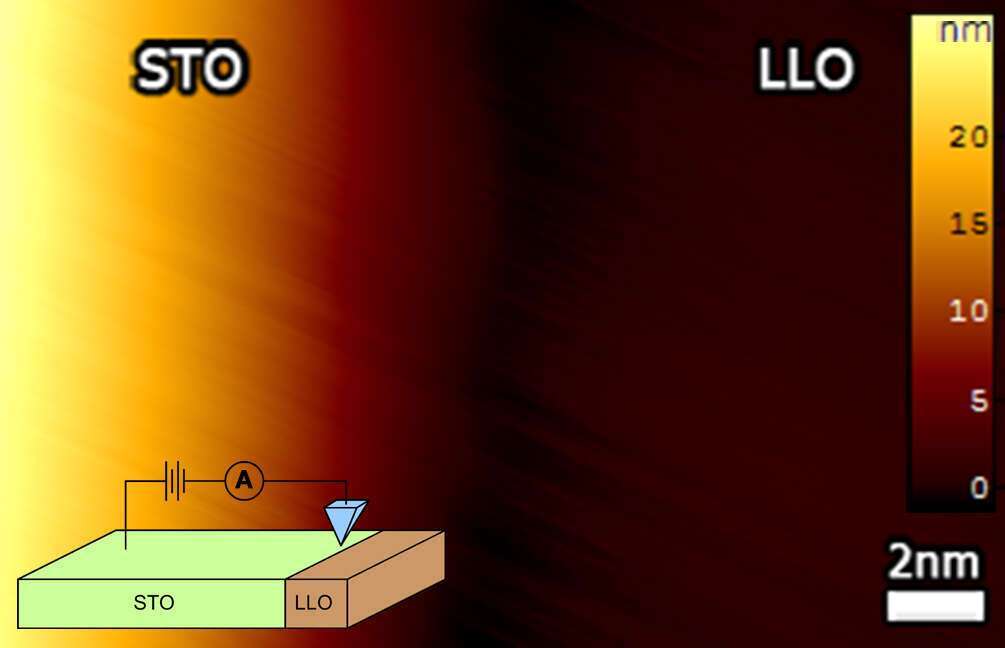
Localized I-V measurements on the STO and LLO sides and at their interface were performed by scanning tunneling spectroscopy (STS) (fig 4). Wince the I-V characteristics of the three types of positions: STO, LLO and interface, were extremely different, the derivative of the tunneling current around 0V was used to map the cross section of the interface (fig. 5b) while simultaneously collecting the z trace of the same position (fig. 5a). When superimposing the map of the metallic behavior over the STM scan (fig. 5c) it can be seen that the metallic behavior is found on the LLO side of the interface. This indicates that an accumulation of charge carriers is present on the LLO side not as a 2DEG but as 0D segments of metallic like behavior.
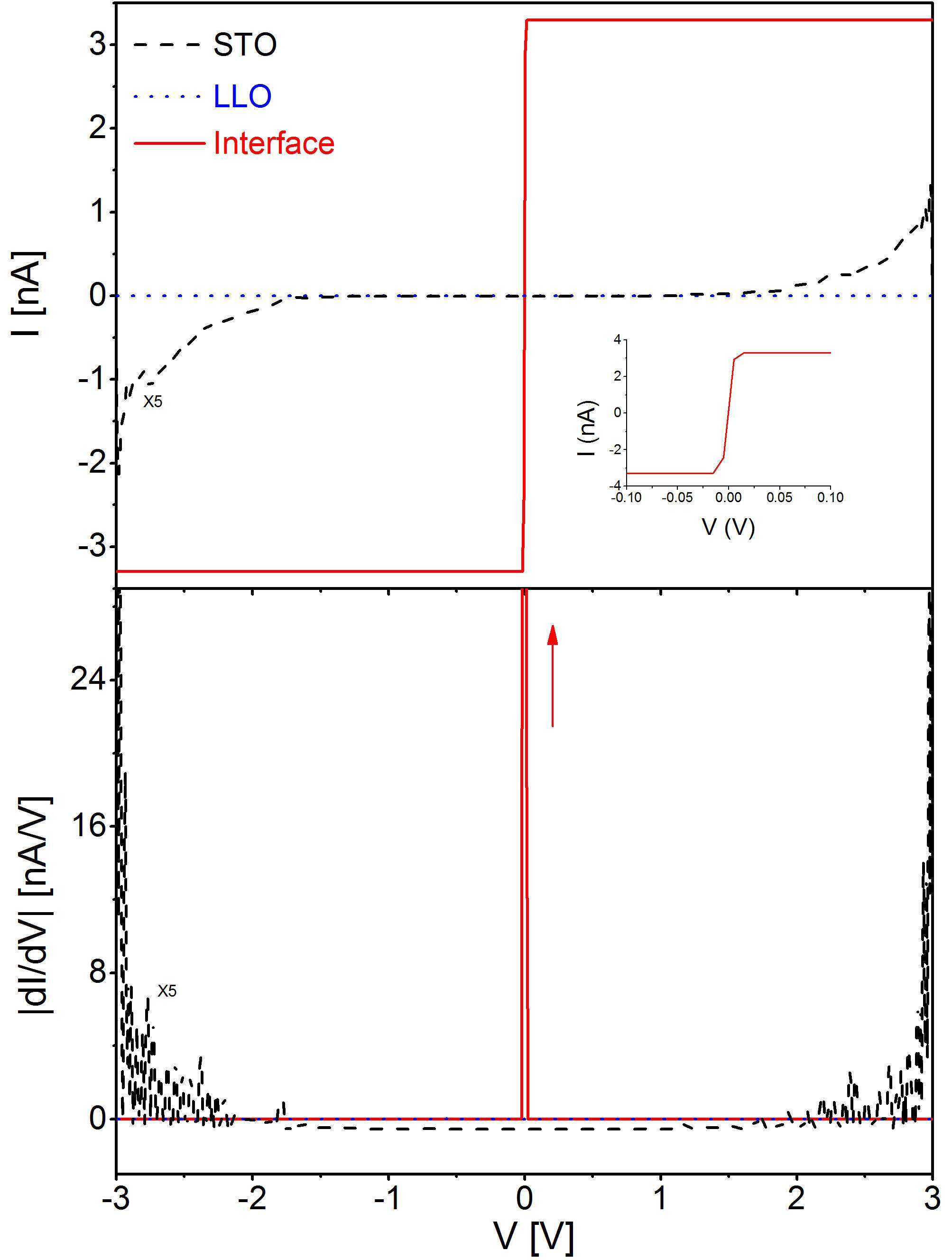
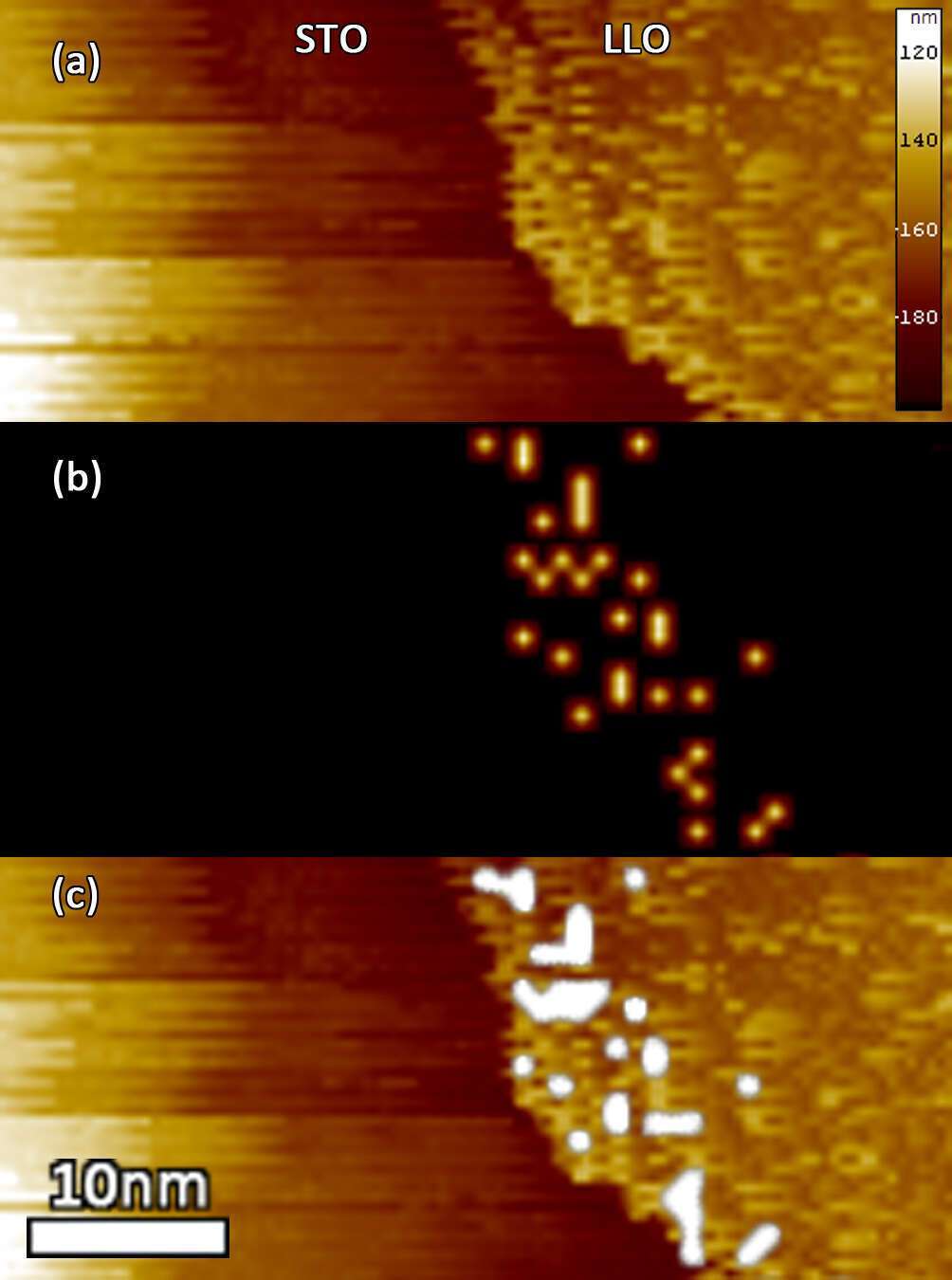
First principle calculations (not shown here) predicted an increase in local potential at the interface, but the discontinuity of the increased carrier concentration can explain why in many cases a 2DEG layer cannot be measured in many oxide combinations although its existence has been predicted by calculations. We hypothesize that the discontinuous nature of the carrier density was created at this interface due to the presence of defects at the imperfect LLO/STO interface.

